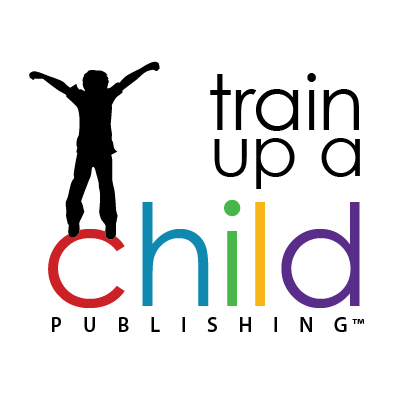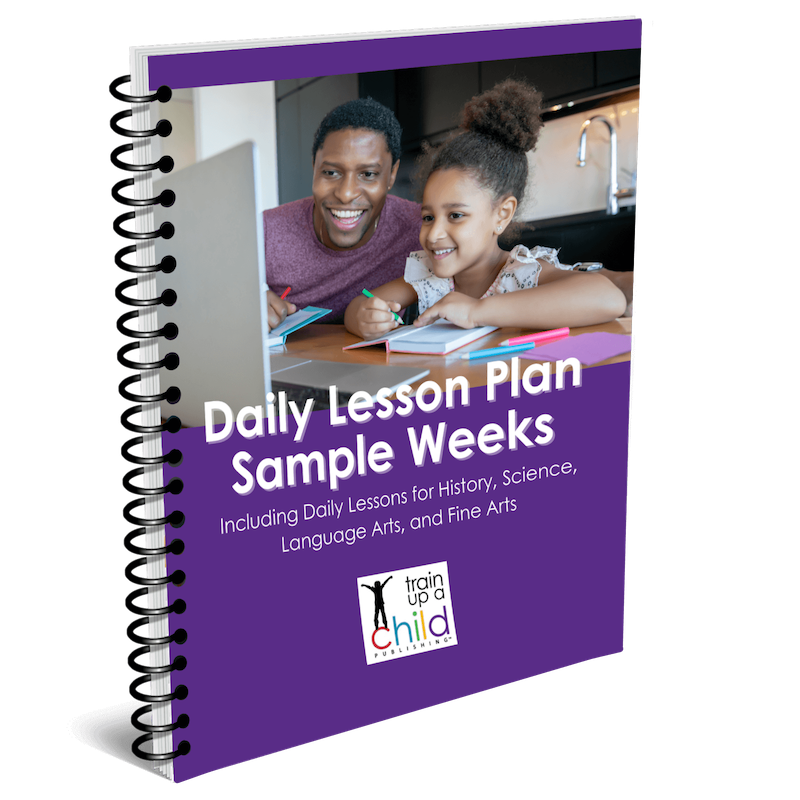Does your kid hate to write?

Steam is starting to come out of your ears as you listen to the tap, tap, tap of your son’s pencil on that blank page as he sits there… groaning and sighing, staring at the ceiling fan going around… and around…and around. When is he going to get started with that writing?! Does your kid hate to write? I have a surefire solution for you.
Keep reading to see how to help your child get over the hump of hating (or being afraid) to write.
Does your child hate to write?
I know what that’s like. I had one student who hated to write, too. And struggling with that blank page made it 100 times harder.
So there are three things I’ve learned over many years of homeschooling (and writing a blog):
- Staring at a blank page is totally intimidating.
- Having somewhere to start makes writing a ton easier.
- The more you write, the easier it gets. (Like with so many other things in life, right?)
So I will tell you about one idea you can implement today that will help YOUR late elementary, middle school, or high school student who hates to write.
After all, I’m all about bringing your kids’ home education to life while having a happy, thriving home. So solving the problem of your kids hating to write is much better than letting this one thing suck the life out of you for months or even years.
Do you agree? I thought so!
Are you ready? So this is what you do…
Assign a reading response journal at least four days a week to your child(ren) who hate(s) to write.
This is simple but effective. All you do is have your student begin a reader’s response journal and write in it almost daily. But only for FIVE MINUTES to start. You’ll tell your writer that he can only write for five minutes even if he has more to say.
So have him read x amount of pages/a chapter, or however much you think is reasonable for your student’s age (and the complexity of the writing). And it’s perfectly fine to have this reading be below their normal reading level. Additionally, it will make this exercise even less scary if it is an exciting story. And if you have a reluctant writer, the better the story, the easier this will be.
Keep reading for the details, but first, here’s how you’ll make this work.
First, you will make the writing less intimidating for your reluctant writer.
- Find a smaller-sized spiral notebook or a composition book. (Smaller = less intimidating.)
- Next, as I mentioned before, picking an exciting story for this child is less intimidating because she’ll become absorbed in the story, so it will be easier to write about.
- Lastly, you will start by having your student write for only five minutes.
- The older your struggling writer is, the faster you can increase the time. Start with the 5 minutes for about three days, then work up to 15-20 minutes in three weeks or so. If your child is struggling after three days, do it for a week at five minutes and then add a few minutes at a time until you work up to 15-20 minutes or more.
- For late-elementary children, play it by ear. As you see your student getting used to writing almost every day, you can increase the duration of the writing.
To make this even less scary, tell your student that editing is not necessary at this point.
Since your goal is to build writing fluency, I recommend that your late elementary, middle school or high school student write without editing. If you have a particularly interesting response from your student on one day, you can always choose to make that into a writing project for the next day or for a few days. (Keep reading to see how I break that down later in the post.) I suggest you wait at least until the second week to do this.
Getting started with a reading response journal
So as you get this started with your student, you’ll need to check the journal to ensure it’s being done.
As Ronald Reagan said, “Trust, but verify.”
Again, have your student write in his reading response journal daily or almost daily. You don’t have to do it every day forever but definitely do it for weeks at a time with occasional breaks in between. And I advise spot checks at irregular intervals, starting with daily, at least for the first week.
Also, writing regular comments on your student’s entries can motivate your child, so do that as often as possible.
Not only does daily writing increase writing fluency. But this assignment also helps your student develop the ability to choose the main idea and summarize a passage. Both are important writing and critical thinking skills.
There are 50 writing prompts below. Start with the easier prompts and then move to more advanced prompts as your student gets used to the process.
Repeat this one regularly: “Summarize today’s reading,” especially if you do this with a 5th grader. Summarizing is a skill that takes a lot of practice to learn. Not naming any names here, but I live with someone who never learned how to summarize. Ahem.
Keep in mind your student’s developmental milestones.
Remember that around middle school, students mature to the point where they begin to be able to think more analytically. If you aren’t sure your student is ready for more analytical thinking but he’s been writing from prompts for a while now, you can ratchet things up a bit and see what happens.
By “ratcheting things up,” I mean to occasionally pitch your student a more analytical question and see how it goes.
High school students should be ready to have analytical prompts anytime. But not all the time. Some older kids enjoy those kinds of prompts more than the simple ones, so watch for that when checking your high school student’s journal. And don’t forget to comment on those journals, especially if you can tell that your child enjoyed the prompt and put effort into the response or if the response was insightful.
For your more artistic students, feel free to throw in prompts that require illustrations. You can always have them go back and write further about the illustration the next day if you think your student didn’t write enough.
So here’s how you do it.
Step-by-step Instructions for having your student who hates to write keep a reading response journal:
- Each day before your student starts his daily reading/writing assignment, have him write the following in his journal:
- Date:
- Title of Book:
- Page Numbers read for this entry (page # started – page # ended)
- Copy the journal prompt you’ve assigned from the list of 50 prompts below.
- Next, have your student read the assigned passage. After reading, have your child respond to the journal prompt you’ve chosen.
- Set a timer, starting with five minutes. Feel free to set a timer and let your student stop after that amount of time (unless she wants to finish her sentence or thought).
- If five minutes seems consistently too short, add a few minutes when you believe your child is ready.
Here are 50 writing prompts to help you get your student’s reading response journal going.
Remember to use the simplest ones initially, especially for younger children.
- Do you like what you are reading? Why or why not?
- In a few sentences, summarize what you read today. (remember to repeat this one regularly)
- If you were a character in this book, who would you be and why?
- Is what you are reading believable? Why or why not?
- Draw four objects that represent your reading. Write a sentence (or more) for each item and tell how it relates to your reading.
- Write down one word from your reading today that you didn’t know. What do you think it could mean from the text of the story? Explain what made you think that.
- Is the setting (where and when the story takes place) described well enough that you have a ‘picture’ of it in your mind? Why or why not?
- Draw the setting in which the story takes place.
- Describe your favorite character and explain why he or she is your favorite.
- Describe your least favorite character and explain why he or she is your least favorite.
- If you were writing this story, what would happen next?
- Tell me about the main character. What kind of person is he or she?
- Tell me what problem the main character is facing. What would you do to solve the problem?
- Describe what has happened in the story so far.
- What is your favorite part of the story so far?
- Write about your least favorite part of the story so far.
- Have you found anything boring about your reading? What made it boring? If you were writing the story, how would you make it more interesting? (You could also give the second sentence here as the prompt for the following day.)
- Describe the thoughts and feelings you had while you were reading today.
- What is the most important idea from this story so far?
- Tell me the title of this book. Do you think the title fits the story from what you’ve read so far? Why or why not?
- What have you learned from this story?
- What ideas do you have about what will happen next? Has the author given you any clues in the story about what will happen next? (This is called foreshadowing.) What were the clues?
- Describe an object that’s important to the story. Draw it. Why is it important?
- Write a short summary of the main points from your reading today. (Repeat this regularly if your student has difficulty or is just learning to summarize.)
- What is the most important event that has occurred in the story so far?
- Who do you think is the most important character in the story, and why?
- What have you learned about life from reading this story?
- Write a paragraph about the main character in the story.
- Write a paragraph about the story’s setting (time, place).
- Has anything happened in the story that was unexpected or surprised you? Describe why or how it surprised you.
- Write about what one character feels. Write about when you felt that way, too.
- Is there anything about the story that is puzzling you? Describe it.
- Is there anything that’s happened in the story that makes you want to find out more about a topic?
- A good story has to have a conflict. What would you say is the main conflict in this story? Are there any other conflicts in the story that you can think of?
- Is there anything that’s happened in this story that makes you angry? What is it, and why did it make you angry?
- If you could have one of the characters in the story be your best friend, who would it be and why?
- What does the story’s main character do for a job, or how does he or she spend most of his or her time? How would you feel about doing that?
- Is there anything in this story that’s made you laugh? Describe it.
- If you were a character in this book, who would you be and why?
- Usually, the main character in a story has a problem to solve. What is the problem, and how would you solve it?
- Is there anything in this story that’s made you sad? What and why?
- Has a character in this story done anything heroic? Describe what happened.
- Choose a “bad” character from your story. How do you think he/she became that way? Does the story give you any clues?
- Choose your favorite character in the story. How do his/her actions reveal his/her character?
- Choose your least favorite character in the story. How do his/her actions reveal his/her character?
- Using the character that you didn’t like from the story, what did the author say about this character that caused you to dislike him/her?
- Would you trade places with a character in your story? Why or why not?
- We call the “good guy/girl” in a story the protagonist, and the “bad guy/girl” the antagonist. Identify each of them in the story and choose one to write about. Describe the person – what does he or she look like? What does he think about, struggle with, and what are his goals? What’s he trying to do in the story? (You can break this up into more than one day or have your student write about the protagonist and antagonist the next.)
- Would the story you’re reading make a good movie? Why or why not?
- Choose one character in the story that you can relate to the most, and describe how you can relate to this character.
Most important: Be consistent.
Hang in there, Mom! You might hear some groaning about this, but if you cut down on other writing for the first week to compensate for this daily assignment, it will go better.
Choosing the right book, providing a prompt for your student to respond to, and keeping the writing time to five minutes (in the beginning) will make this exercise much less intimidating. And if you are consistent over at least a month, your child’s writing will become much easier for him and take much less effort.
In fact, a GREAT time to do this is over the summer or another time when you aren’t doing as much “homeschool work.” It won’t take up much time, but you might see dramatic results if you consistently do this!
Remember, this is one of those things you need to do with your student almost every day over a long period of time to get over the “I hate to write” hump. Writing is just a skill like any other. The more you practice a skill, the better you get!
How to help your student turn a short response into more of a paper.
Occasionally, you’ll hit on a prompt that your child has something to say about. You can tell by how he or she isn’t done when the timer goes off or by the intriguing ideas in the response. When you read over a response like that, put a positive comment there showing your interest in what your student wrote. You might even add, “I’d love to hear more about this!”
Then on another day, you would have him go back to his journal entry and expand it. Perhaps on a third day, you’d have your student read it aloud and fully develop his thoughts. On another day, he can start the editing. (Well-developed paragraphs, correct spelling and punctuation, etc. In other words, break up that assignment into smaller chunks to be easier.)
So it might look like this:
- First Day: have your student write for 5 minutes (remember to add a little more time once the daily writing habit is established).
- Second Day: Talk through it; tell your student you’d love to hear more about this subject from her, so have her write more about it for 5-10 more minutes.
- Third Day: If you think there’s more to say, have your student write more. You can ask probing questions where you see a few spaces that need elaboration if your student is unsure what else needs to be said.
- Fourth Day: Have your student begin the editing process. Ask your student to:
-
- Read through her paper aloud to make sure the writing makes sense and fill in where needed.
- Make thoughts into well-developed paragraphs
-
- Fifth Day: Edit spelling, punctuation, and grammar.
I suggest using an editing checklist for your middle schooler and high schooler. (There are editing checklists in our K-5th Grade and 6th-12th Grade Teacher’s Manuals.) If you have an elementary student, work together on the corrections, for example:
- Please read your story out loud, and let’s see if there are any missing words or confusing parts to it.
- If you find things that are missing, ask clarifying questions, such as:
- What did you mean by that?
- I’m a little confused. Can you describe in more detail what that character did first, second, etc.?
- What word do you think you might be missing in that sentence? Read it again…
Remember, you would do all of this every so often, not for every journal entry your student makes.
Have you ever had your student keep a reading response journal before?
Daily writing in a reading response journal is one fairly painless way to improve your students’ writing fluency and help them get past the “I hate to write” phase. If you choose a great book and you’re consistent with the writing time, this can help your child who hates writing realize it’s not so painful.
Happy writing!
![]()
If you’d like to learn how to bring your kids’ homeschool education to life, click on the graphic below!




Thank you for an excellent idea. I plan to implement this with my 11 year old son in the coming weeks. He’s writing some narrations, but I think the consistency of writing in a reader response journal daily will help his writing improve a good bit. Do you recommend doing this with only one book per day? He reads from history or science and literature daily. Just wondering if I should alternate books or stick with one. Thank you!
Hello there, Christie; I’m happy the idea was helpful! I would start with the literature book, as that format lends itself best to this type of writing. Continually writing about one book at a time will help your son learn to look at it more deeply, helpful for critical thinking. Historical fiction would be another excellent choice for a beginning book to respond to. I would continue the oral/written narrations on non-fiction history and science books, then use prompts for the non-fiction books once your children are used to the reading response journals. But you know your children best!
Journal or response writing often proves to be a successful tool for reluctant writers. Consistent evaluation and commenting on your child’s writing will encourage him or her to write more. Allowing your child to choose from the topics helps provide a sense of “control” over a subject that you child may not love.
Great ideas, Dana! Thanks for writing. 🙂
I agree about responding in writing to your child’s journal entries, Beth. I think choosing topics can definitely be effective; I let my son do that with his first research paper. That way he could learn the research paper format without being bogged down with the research needed on a topic he considered boring. With the reading response journal, it worked best with my kids when there was some kind of prompt. They still had control over what they wrote, but having a place to start helped!